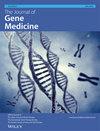mRNA expression insights: Unraveling the relationship between COPD and lung cancer
Abstract
Background
Lung cancer is a prevalent form of cancer worldwide. A possible link between lung cancer and chronic obstructive pulmonary disease (COPD) has been suggested by recent studies. The objective of our research was to analyze the mRNA expression patterns in both situations, with a specific emphasis on their biological functions and the pathways they are linked to.
Method
Data on COPD mRNA expression was collected from the NCBI-GEO database, while information regarding lung cancer mRNA was acquired from The Cancer Genome Atlas database. To examine the association of COPD-related scores in lung cancer patients, we utilized the ssGSEA algorithm for single sample gene set enrichment analysis. The possible routes were examined through the utilization of Gene Ontology and Kyoto Encyclopedia of Genes and Genomes enrichment analysis. Risk models were developed using Cox and least absolute shrinkage and selection operator (LASSO) regression analyses. Moreover, a GSEA was performed to investigate significant pathways among various risk groups.
Result
After identifying 17 genes that were differentially expressed and linked to COPD, we found that they met the criteria of having a false discovery rate < 0.05 and an absolute log2 fold change > 0.585. By utilizing the ssGSEA algorithm, it became possible to classify individuals with lung cancer into two distinct groups based on their COPD status. Consequently, a seven-gene risk model was developed specifically for these patients. The risk score was determined by applying the given formula: risk score = AC022784.1 × 0.0423737993775888 + CRISP3 × 0.0415322046890524 + MELTF × 0.0661848418476596 + MT2P1 × 0.111843227536117 + FAM83A-AS1 × 0.045295939710361 + ZNF506 × −0.309489953363417 + ITGA6 × 0.01813978449589. The risk model associated with COPD showed a notable connection with different immune cells found in the lung cancer sample, including macrophages of M0/M1/M2 types, hematopoietic stem cells, mast cells, NK T cells and regulatory T cells. Overexpression of crucial genes was seen to enhance cell proliferation and invasive potential in the lung cancer sample. In the lung cancer sample, it was observed that an increase in ZNF506 expression enhanced both cell proliferation and invasion.
Conclusion
In conclusion, this study effectively examines the potential correlation between COPD and lung cancer. A prognostic model based on seven COPD-associated genes demonstrated robust predictive potential in the lung cancer sample. Our analysis offers comprehensive insights for lung cancer patients.

 求助内容:
求助内容: 应助结果提醒方式:
应助结果提醒方式:


